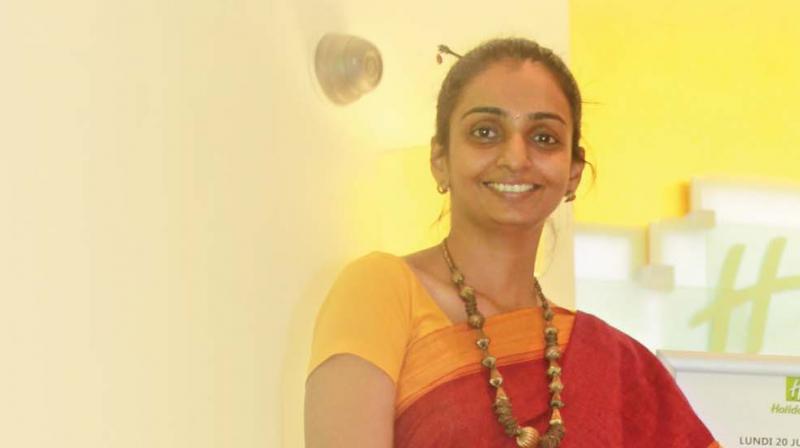What's in a Weave?

“A hand-woven sari is more than a piece of cloth.” Hemalata Jain tells us. “There are hands that have brought it to life.” she explains. Every stage of its creation is nourished by a person. From the dyeing of the yarn to setting it up on large frame looms for the weaver, at every stage a person breathes life and imagination into the weave.
“So every handcrafted weave is unique.” smiles the textile designer. Jain, through her project Punarjeevana, revived the ‘Patteda anchu’ weave and is now working on bringing back the ‘Gomi teni’ in Karnataka. “I had seen the sample with an elderly Lingayat lady who had received the sari as a gift from her in-laws 60 years ago.” she says of the cotton weave characterised by contrasting checks and two pallus.
“It’s sad but like the patteda even this they had stopped weaving because of the lack of demand. Traditionally, it was given as gifts to new brides and expectant mothers as a symbol of prosperity.” she says. It’s most distinctive feature however are the jowar stalks (herringbone pattern) on the border of the weave. Jowar is grown in north Karnataka and its harvest indicates prosperity.
The sari is now available in three eco-friendly hues —red, a deep purple-brown and in a monochrome. The NIFT graduate recounts how a serendipitous encounter with the remnants of a patteda sari at the famous Yellamma Saundatti temple in 2014 inspired her to start her revival project.
“Historically Gajendragad was a hub for handloom production. It can be traced back to the 10th century. It’s a pity that weaving of these saris had come to standstill as it’s a part of our history and are so lovely.”
With consistent work the weaver cluster she had empowered in Gajendragad — a town around 450 kms outside Bengaluru —showed interest in producing more saris so Jain found a sample of the Gomi Teni and worked with them last year. Now a textile professor at Symbiosis University, Jain hopes to work reviving more beautiful weaves in the future.

